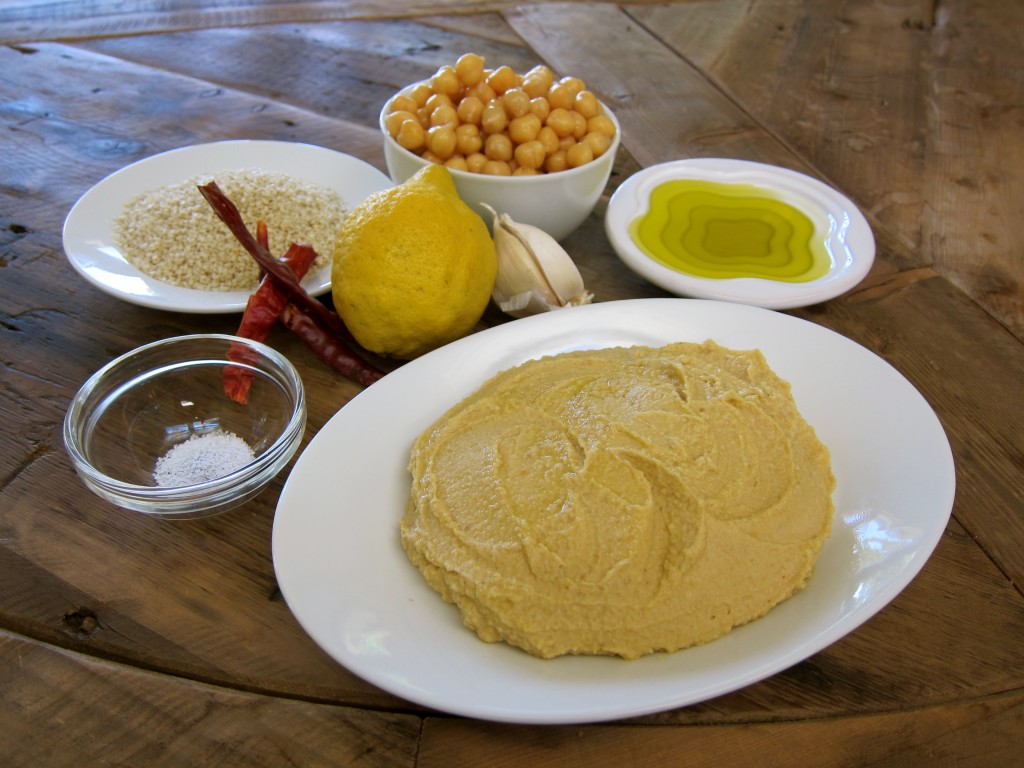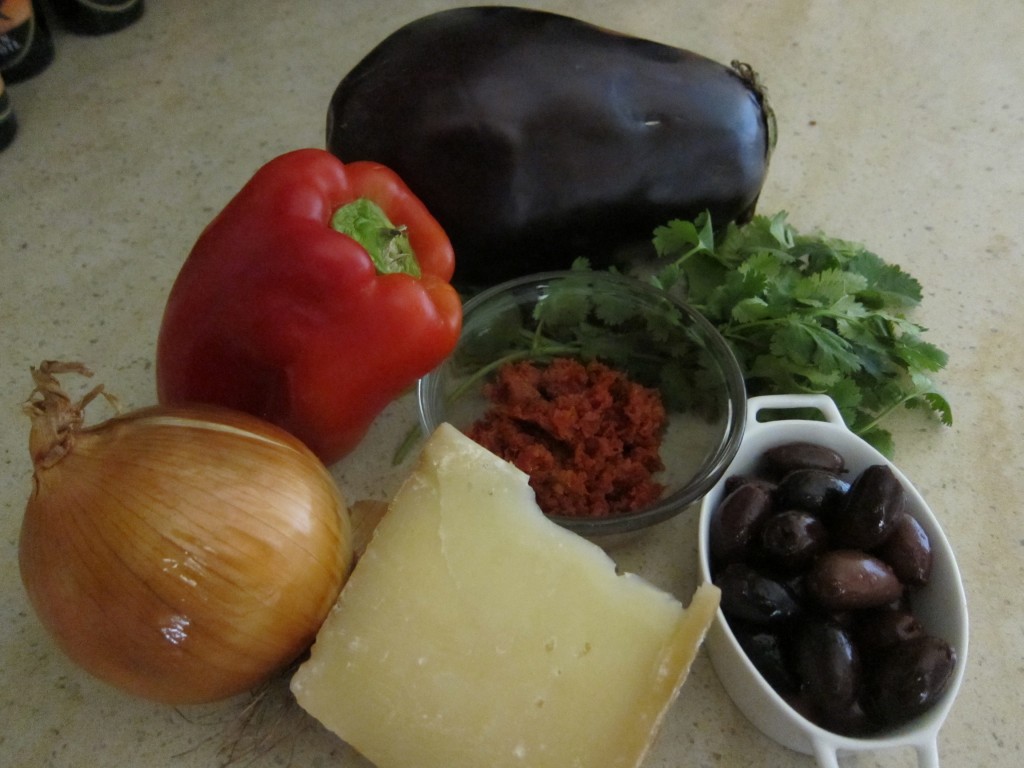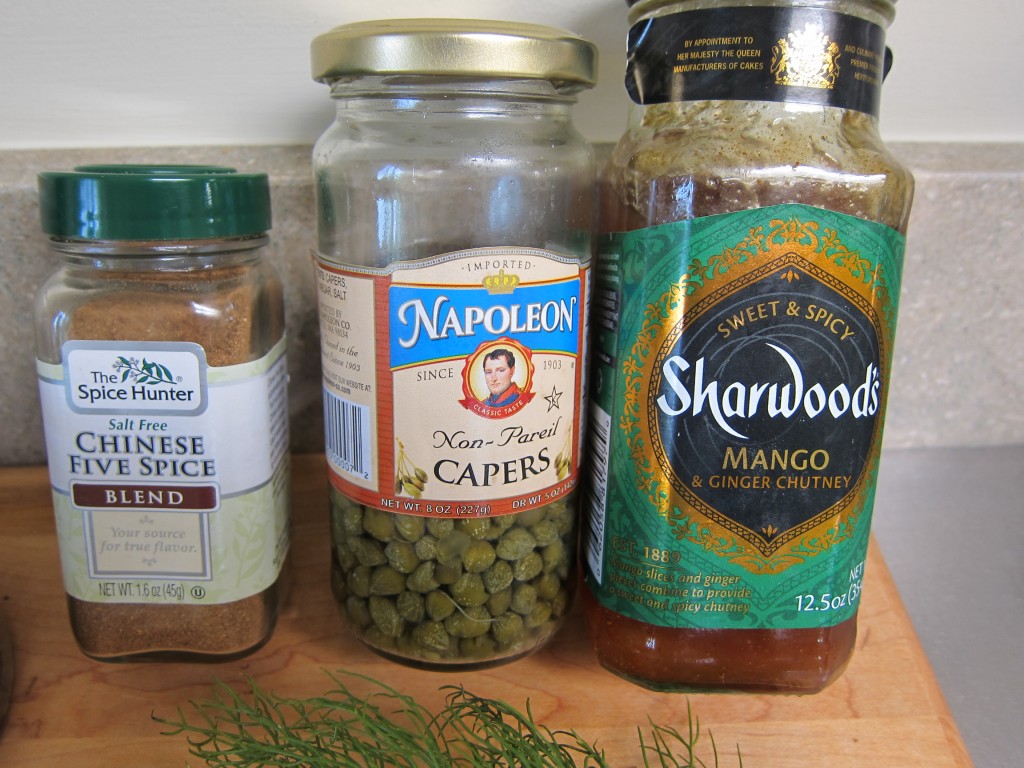Hummus The Great

Basic Hummus surrounded by its ingredients. From left: salt, chili peppers, sesame seeds, lemon, garlic, chickpeas and olive oil.
Hummus, a paste made with ground sesame seeds and cooked chickpeas, was one of man’s first prepared foods. It originated thousands of years ago in northern Africa and has been an integral part of many African, Persian Gulf and southern European food cultures for over a thousand years. Because plain hummus tastes pretty bland, generations of creative cooks have perked it up with flavors like lemon juice, garlic, salt and herbs that complemented their local foods. Hummus is a quintessential multi-ethnic food.
It’s also highly nutritious. Sesame seeds and chickpeas together provide fat, protein, fiber, calcium and sugar*. They also are harvested from easily cultivated, drought tolerant plants that thrive in subtropical climates. It’s pretty obvious why hummus is a staple food of so many societies.
Health conscious Americans embraced hummus decades ago; now it’s a hot “ethnic” item in mainline food markets across the country.
With three or four flavors available in most supermarkets, why bother to make homemade hummus? Three reasons: it’s as easy to prepare as Cream of Wheat, it costs much less to make than buy and most important to me, I can add flavors that make it taste just the way I want it to. Toasted cumin comes alive in hummus!
In America most hummus is eaten as a dip for pita chips or crudites, but it can be much more than that. Try it as a substitute for mayonnaise in a lamb or pork sandwich using crusty artisan or Indian Naan bread. It’s also a delicious thickener in hearty soups or stews and a great condiment for lamb burgers, barbecued chicken or any kind of grilled kabob.
Basic Hummus
Makes about 1 pint
Ingredients
1 clove fresh garlic, peeled, or equivalent quantity of garlic paste
1, 15oz can garbanzo beans, rinsed and drained
1/4 cup fresh tahini
Juice from 1 medium size lemon (about 1/4 cup)
2 tbs. extra virgin olive oil
1/4 tsp. Chinese Chili paste (or 1/4 tsp. dehydrated red pepper flakes)
Salt to taste
Procedure
- Put the garlic clove in a small bowl and cover with boiling water. Let it soak for about 5 minutes, then discard the water.
- Put garlic, chickpeas, tahini, lemon juice, olive oil and chili paste into a blender or processor and process until it is smooth and completely blended. Taste and add salt if necessary.
- Store refrigerated and covered for up to two weeks.
- Most supermarkets, specialty grocery stores and health food stores carry fresh tahini in 1/2 pint containers. Canned and dried chickpeas are readily available.
A Few Suggested Variations
1. A Greek Touch
In the blender, add another clove of garlic soaked as above, the juice from another half lemon and 1 tsp. grated lemon zest. After blending stir in 1 tbs. finely chopped Greek oregano, finely chopped kalamata olives or small, drained capers or finely chopped roasted (seeded and skinned afterward) red bell pepper. Sprinkle broken up Feta cheese over the top.
2. Moroccan?
In the blender, add 1/4 tsp. ground Star Anise and 1 tbs. pumpkin oil. After blending stir in 2 tbs. finely chopped roasted (seeded and skinned afterward) red bell pepper and 1 tsp. finely chopped fresh mint leaves.
3. Italian?
In the blender, add another clove of garlic soaked as above and 1 tsp. aged balsamic vinegar. After blending, add 1/4 cup finely chopped roasted tomato, 1/4 cup cooked eggplant (skinned), 2tbs. finely chopped basil. Sprinkle grated aged parmesan cheese over the top.
4. East Indian?
In the blender add 1/4 tsp. garam masala and 1/8 tsp. turmeric and 1/2 tsp. toasted sesame oil. Top the finished hummus with Mango Chutney.
5. Tex Mex?
In the blender add 1/2 tsp. toasted ground cumin, substitute fresh lime juice for the lemon juice and add 1 tsp. Green Tabasco sauce. After blending stir in 2 tbs. finely chopped fresh cilantro.
The next time you grill chicken, lamb kabobs, pork ribs, shrimp or summer vegetables, consider getting some Naan bread or a plain, thin pizza crust and make your own hummus to spread on the heated bread. After the first bite you will know first hand why yummy hummus has been around for so long.
Let us know what variations you make to the basic recipe and other foods you serve with hummus.
*A cup of sesame seeds (also known as benniseeds) contains calcium and iron, 26 grams of protein, 17 grams of dietary fiber, 72 grams of fat and a higher percentage of oil than any other seed. A cup of chickpeas contain 35 grams of dietary fiber, 39 grams of protein and 21 grams of sugars.

